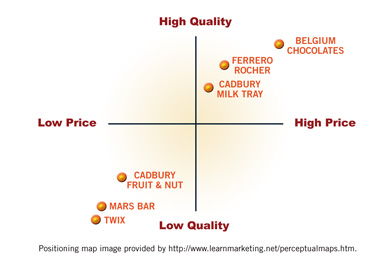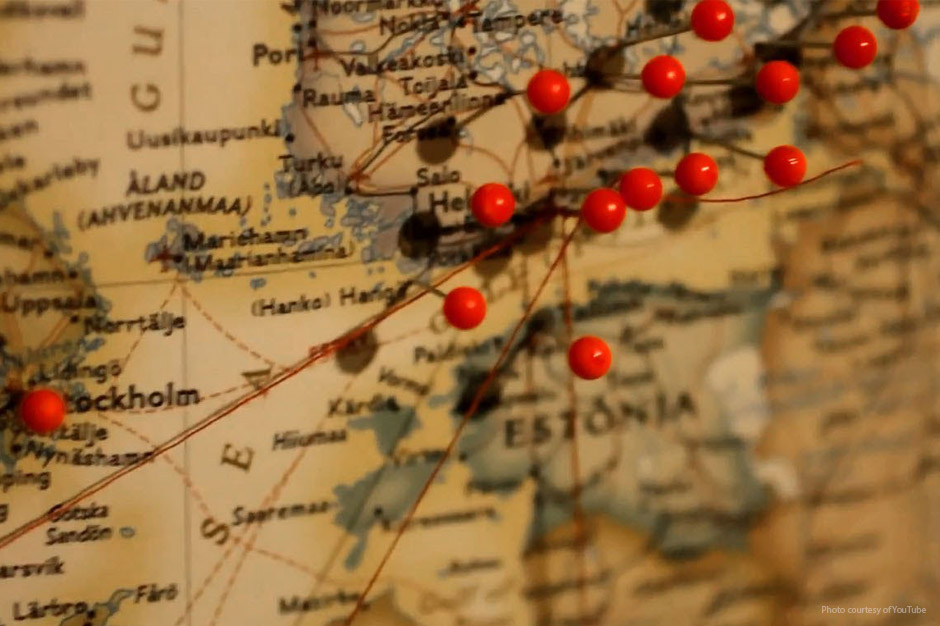Welcome to the first half of a discussion on the positioning map, a visual representation of your brand's perception as related to competing products. It's interesting to note that visual thinkers, people who describe thinking in pictures, are thought to represent about 60%-65% of the general population.
Thinking in pictures is one of a number of forms of non-verbal thought such as kinesthetic (experiential or doer-thinking), musical and mathematical thinking. Problem is, the verbally oriented left-brainers who run most major companies don't seem to understand the power of a visual, or the power of a positioning map. And thus, fail to crystallize the company's strategy for internal audiences responsible for living and executing the brand position.
Marty Neumeier, president of San Francisco think tank Neutron and author of the book The Brand Gap, points out why visualizing your difference in concrete ways is so important:
Differentiation works because of the way the human cognitive system works. Our brain acts as a filter to protect us from the vast amount of irrelevant information that surrounds us every day ... We get [this] data from our senses, then compare it to data from earlier experiences, and put it into a category. Thus we can differentiate between a dog and a lion, a shadow and a crevasse, or an edible mushroom and a poisonous one (usually). The sense we rely on mostly is sight. Our visual system is hardwired to discern the differences between the things we see, starting with the biggest differences down to the small. It looks for contrasts. It recognizes differences between subject and ground, big and small, dark and light ... Then the brain takes over and begins to make meaning. It recognizes those differences such as those between near and far, old and new, simple and complex ... (34-35)
Notice that we use sight to contrast and compare. Marketers who do not use visuals to help stakeholders see how customers perceive the product are risking failure in communicating marketing needs.
One of the tools we use in our Appreciative Discovery® to engage and help the six in 10 visual thinkers in the room is a positioning map, sometimes referred to as a perceptual map or concept map. A positioning map is a way of representing relations between ideas or concepts. In other words, it is a way to visually plot your product's perception compared and contrasted with competition against attributes of importance to customers.
In the second half of this discussion, I'll show you how to create and use a positioning map. Below is an example of a positioning map used by marketers as available on the Internet.


Innis Maggiore's Appreciative Discovery works with clients to develop several positioning maps as a tool to find their brand differences. Discover how to make a positioning map and learn about our Appreciative Discovery session. Lorraine Kessler is Innis Maggiore's Principal Client Services & Positioning Strategist.



